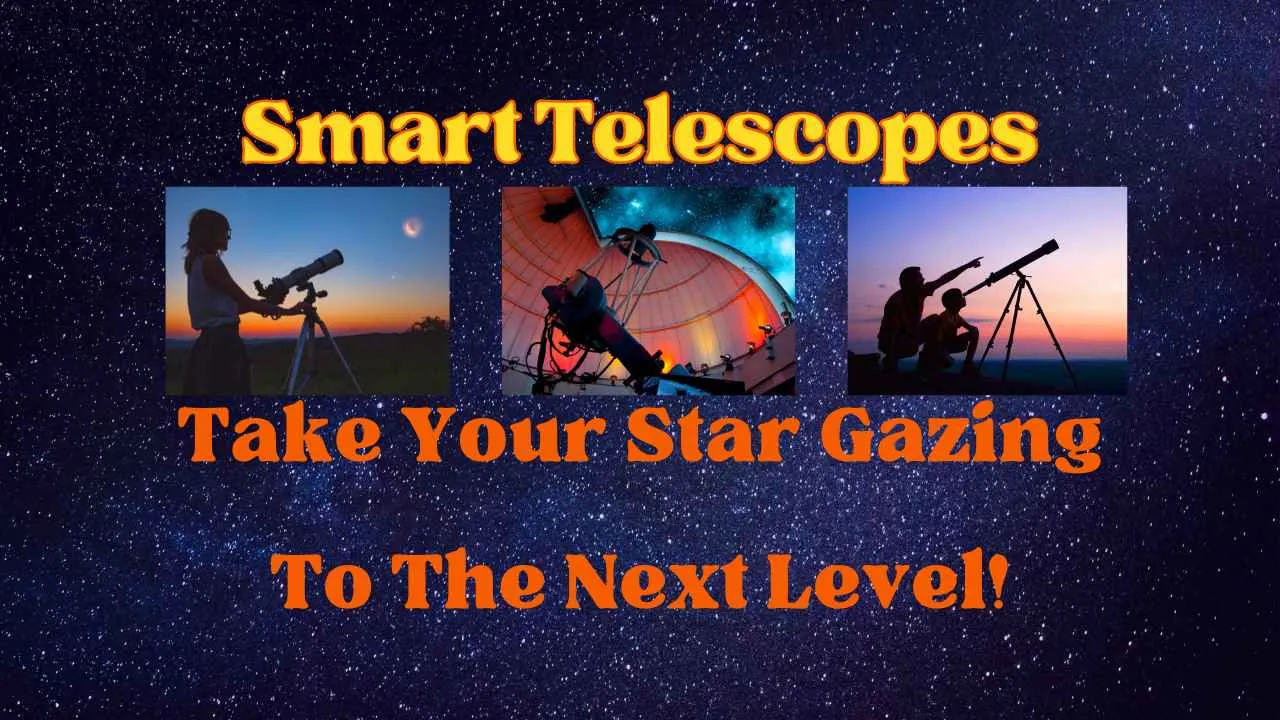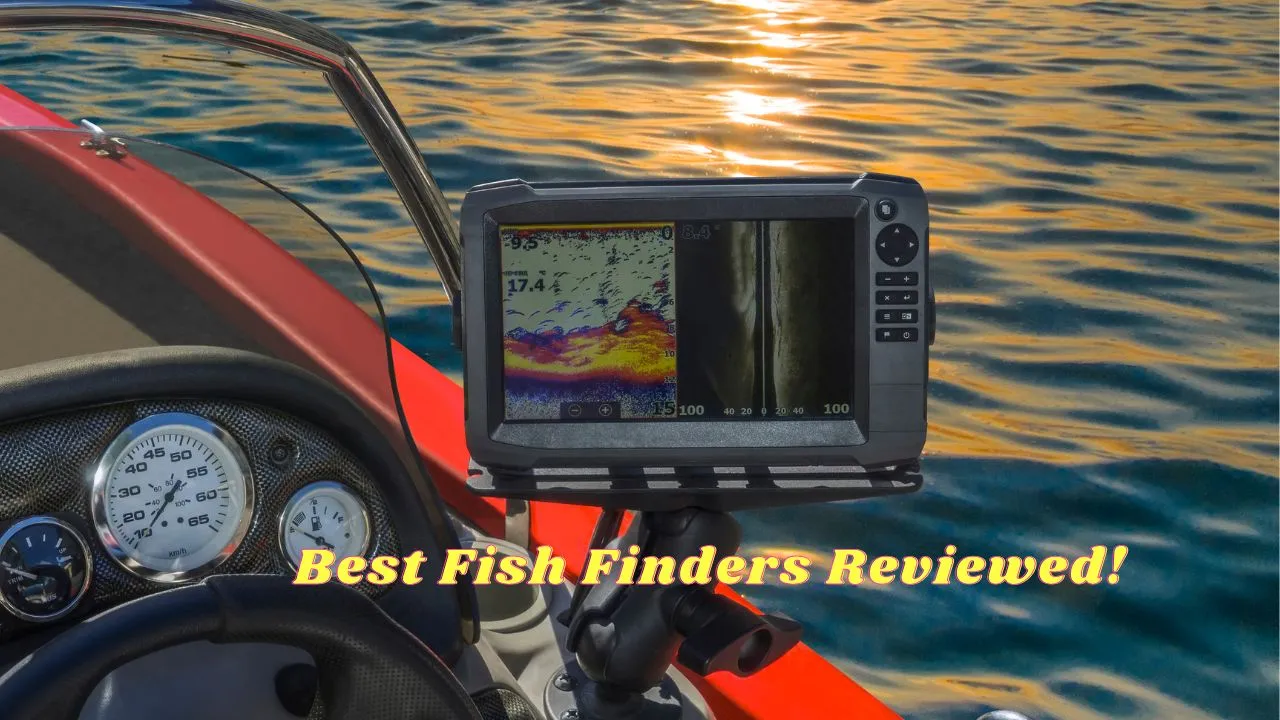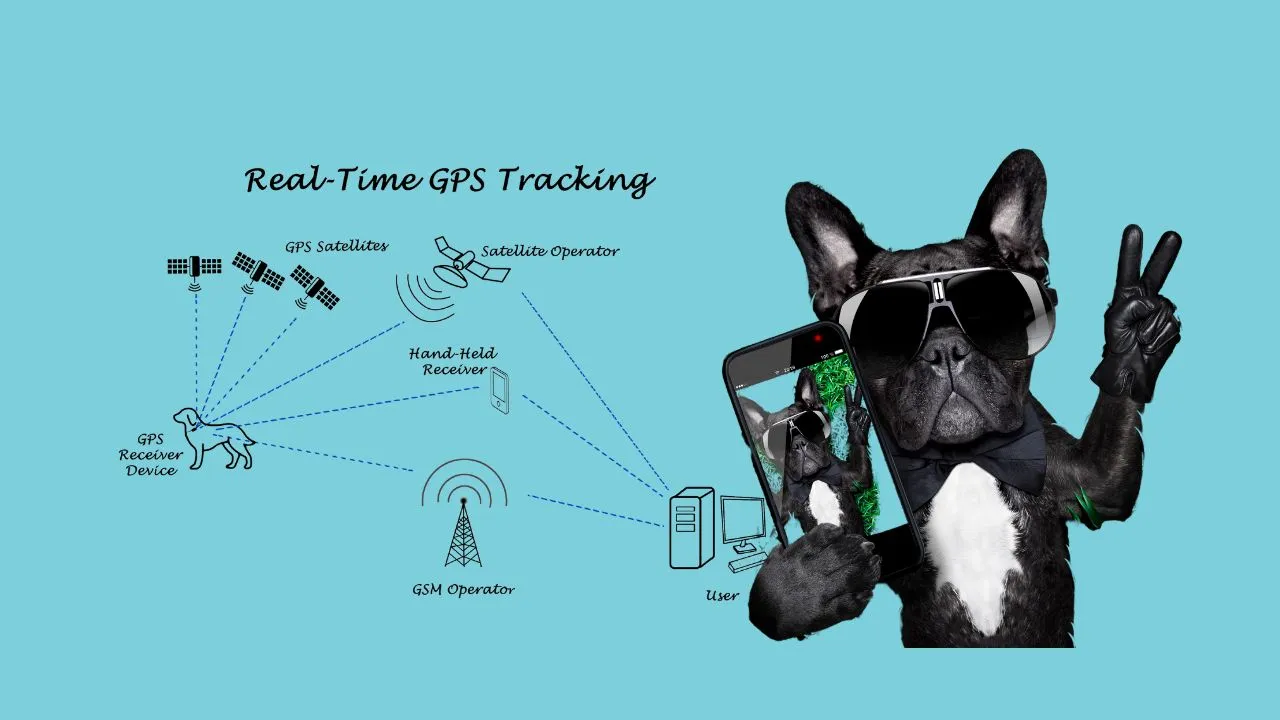Table of Contents
Take your exploration of the night sky to a whole new level with the latest in smart telescopes! This blog post will tell you everything you need to know about these cutting-edge devices, from how they can help overcome light pollution and offer up more detailed views of stars, planets, galaxies and other celestial bodies. Get ready for an unforgettable journey through time, using only superior technology combined with accessories designed specifically for astronomy sessions!
Brief Takeaway
- Discover the amazing world of stargazing with smart telescopes in 2023!
- What criteria we used to choose the best smart telescopes.
- Understanding what your needs are and managing your expectations-it's new technology.
- Overcome light pollution and capture stunning celestial images with advanced features & technology.
- Enhance your experience by investing in accessories, following tips for use, and connecting/sharing discoveries with fellow enthusiasts.
How We Choose The Best Smart Telescopes
1. Smart Capabilities: We looked at how "smart" each telescope is, including features like automated tracking, smartphone integration, and computerized databases of celestial objects.
2. Optical Quality: The quality of the optics determines how clear and detailed the images will be. Higher-quality optics generally lead to better viewing experiences.
3. User-Friendliness: We considered how easy each telescope is to set up and use, especially for beginners. This includes aspects like the intuitiveness of the software and the ease of aligning and focusing the telescope.
4. Versatility: Some telescopes are better suited to certain types of viewing (e.g., planetary vs. deep sky) than others. A more versatile telescope can provide a wider range of viewing experiences.
5. Portability: Telescopes that are easy to transport and set up can be used in a variety of locations, providing more opportunities for stargazing.
6. Overall Performance and Reviews: Lastly, we took into account the overall performance of each telescope as reported in user reviews and professional evaluations. This gave me a sense of how well each telescope performs in real-world conditions.
Please note that these criteria are not definitve and different people might prioritize different features depending on their specific needs and level of experience with telescopes as well as their budget.
Your Needs And Preferences
Our list below provides choices for a users needs and preferences. Figure out what is "Best For Your Situation" and then make a decision. Just because it's the most expensive telescope doesn't mean its the best. What's best is what is suitable for your needs. Finally, there are other smart scopes and we will list them at the end but for now these are our best picks:
With detailed and rigorous research, we provide our readers with the finest recommendations. Our recommendations are our opinions. Our cause is backed by reader support- for every click made through one of our affiliates links, a commission may be earned at no extra expense to you! As an Amazon Associate, Reviewsopedia may earn a commission from qualifying purchases. Thank you and enjoy!
Top Smart Telescopes in 2023
Lately, a variety of smart telescopes with innovative features have been made available to meet astronomy enthusiasts needs and budgets. Whether you’re just starting out or an experienced astronomer, these powerful devices will allow for observation of celestial bodies like star clusters and galaxies in light polluted cities even from your own backyard.
The Celestron StarSense Explorer DX 102AZ is perfect for beginners due to its aperture size (102mm) and focal length (660mm). It boasts f/6.5 as its focal ratio, allowing deep sky objects to be observed clearly too!
For intermediate stargazers, there’s the NexStar 5SE which offers a large 5-inch aperture along with 1250 mm focusing capability. Making deep space object sightings easier than ever before!
Last but not least, advanced telescope users can look forward to Unistellar eVscope eQuinox that comes equipped with 114 mm optical system, 400mm focus lens complimented by mechanical rotation capabilities while also providing Vixen compatibility assuring seamless tracking experience when observing night time wonders as well planets located around our solar system including Milky Way galaxy ones!
These best smart telescopes from 2023 are ideal choices helping unlock secrets regarding different astronomical phenomena beyond what basic human vision allows us to see, so they come highly recommended.
Entry-level Smart Telescope: Celestron StarSense Explorer DX 102AZ
The Celestron StarSense Explorer DX 102AZ is an affordable yet intuitive telescope created specifically for newbies in astronomy. Boasting a 660mm focal length and diameter of 102mm, it serves as a perfect reflector scope for observing deep sky objects, planets from the solar system plus heavenly bodies like the Orion Nebula without difficulty.
To simplify its use, this package includes several useful elements such as 2x Barlow lens with camera adapter piece. 6x30 finderscope comes with star diagonal component together-with steel tripod base that helps to mount the device on uneven ground surfaces correctly once pointed at night sky destinations effortlessly due to its AutoAlign feature!
Priced modestly, it is one of the most cost effective entry-level scopes out there, especially since people can explore stars by just using their smartphones too - reinforcing backyard stargazing activity while learning astronomy altogether – thereby great value that cannot be overlooked when considering the features this model offers. The better version is Celestron StarSense Explorer DX 130AZ
Intermediate Smart Telescope: Celestron NexStar 5SE
For ambitious stargazers searching for an adaptable and portable smart telescope, the Celestron NexStar 5SE is a great selection. Featuring an impressive 1250mm focal length plus a wide aperture of five inches, this competent instrument can be used to spot deep sky objects such as galaxies, stars clusters and celestial bodies in the night sky with incredible clarity. It also features GoTo mount technology as well as SkyAlign alignment system that simplifies tracking these distant astronomical targets in order to provide an unparalleled gazing experience into space.
The Celestial Nexstar 5SE packs extra advanced features like its Celestron SkyPortal app, which makes it easy for users to connect wirelessly using built-in Wi-Fi network by accessing “sky tour” so they can observe different interesting phenomena from above automatically pointing their devices at them.
Due to battery life issues being quickly consumed, some might see this setback, but overall performance from this remarkable unit far exceeds those minor drawbacks making it an awesome choice worthy enough even for intermediate astronomers who are aiming towards taking their exploration out there on the next level! Of course the more advanced version is Celestial Nexstr 8se
Advanced Smart Telescope: Unistellar eVscope eQuinox
The Unistellar eVscope eQuinox is an advanced, state-of-the-art telescope created with experienced astronomers and astrophotographers in mind. Boasting a 114mm aperture plus 400mm focal length, this smart telescope provides users with the opportunity to witness deep space wonders such as galaxies, star clusters or nebulae in remarkable clarity. Its mechanical rotation system combined with Vixen compatibility ensures smooth tracking of celestial objects for a sensational stargazing experience.
A unique feature included on the device is its electronic eyepiece - eliminating traditional components while allowing up to ten smartphones/tablets connected via Wi-Fi network to view pictures and video taken from within the scope’s range! Not only does removing said element deliver extra two hours’ battery life, but it also offers great opportunities when multiple individuals are involved during observation activities too!
You will receive formidable performance along with sophisticated features all nested inside sleek design making Unistellar eVscope eQuinox ideal choice for those seeking superior telescopes for viewing and capturing gorgeous glimpses into outer space realm without any compromises made. The more advanced version is Unistellar eVscope Equinox 2
Overcoming Light Pollution
Light pollution can be a significant impediment for star gazers, as the overabundance of manmade light in the night sky makes it hard to discern stars, planets and other heavenly bodies. Smart telescopes are furnished with high-tech features that help surmount this problem so city dwellers can still appreciate stargazing experiences even when artificial lighting is present.
One of the most powerful ways these smart instruments battle light pollution is by equipping them with special filters which hinder certain wavelengths like those from streetlights while permitting an unobstructed passage for celestial items’ glimmering rays. This yields improved clarity and intensity allowing individuals to observe dimly lit objects such as galaxies despite existing illumination contamination levels existent in cities worldwide.
The Celestron StarSense Explorer DX 102AZ, Celestron NexStar 5SE and Unistellar eVscope Equinox offer spectacular cosmic views regardless of ambient radiation due to their ability to block undesirable beams using specialised lenses plus additional hi-tech parts integrated into construction framework. Essentially, ensuring access remains consistent among all - whether dealing with urban or backyard glare problems because they enable observers to see beauty heaven’s has made available no matter what environment one inhabits!
Smart Telescope Technology
Astronomy is being revolutionized by the introduction of advanced telescopes, which offer up features and technology that can accommodate any level of experience. These devices come equipped with highly developed optics as well as motorized mounts plus built-in cameras. This permits an effortless yet fulfilling stargazing outing.
These smart telescopes are able to link up with mobile phones or tablets via specialized applications - allowing you to manage your telescope from wherever you may be! It’s even possible for several people to connect multiple devices together simultaneously through multi-user mode capabilities in order to create a more fun collaborative exploration activity.
Such innovative designs like Celestron StarSense AutoAlign system and Unistellar eVscope eQuinox mechanical rotation system provide novice observers practical ease when seeking out stars or other celestial objects alike while also recording incredibly mesmerizing images at the same time too, taking home those amazing wonders found across space right into your personal residence.
Other Highly Rated Smart Telescopes
Unistellar eVscope 2 Smart Telescope: Best for tech-savvy stargazers, innovation lovers
Vaonis Stellina Observation Station: Best for high-tech observers, gadget lovers
Celestron - NexStar 8SE Telescope: Best for versatile users, all levels
Vaonis Vespera: Best for urban astrophotography enthusiasts with ease of use and setup
Celestron StarSense Explorer DX 102AZ: Best for stargazing enthusiasts, beginners or entry-level smart telescope seeker
NexStar 5SE-Best for traveling astronomers, portable use or intermediate users
StarSense Explorer DX 130AZ Smartphone App-Enabled Telescope: Best for tech enthusiasts, smartphone users
Celestron – StarSense Explorer 8-inch Dobsonian: Best for deep-sky observers, experienced stargazers
Celestron - NexStar 127SLT Computerized Telescope: Best for deep space exploration
Celestron - NexStar 130SLT Computerized Telescope: Best for efficiency seekers, quick setup
DWARFLAB Dwarf II Smart Digital Telescope: Best for astrophotgraphy and nature observation
Celestron - NexStar Evolution 8: Best for beginners and experienced astronomers due to being a powerful, versatile, and user-friendly telescope
Meade Instruments ETX125 Observer Telescope: Best for beginners astronomers, series star gazers, astrophotographers, traveling astronomers, and value seekers
GALAEYES Smart Telescope: Best for novice astronomers, casual stargazers or a great starter for kids
Reflector vs. Catadioptric Telescopes
When selecting the most appropriate smart telescope for your purposes, it is important to be aware of the benefits that both reflector and catadioptric models have. Reflectors collect light with mirrors creating an inexpensive yet reliable design. They are known for their wide aperture providing wonderful sights such as distant galaxies or nebulae. The Newtonian scope would provide a good mix between great performance at a reasonable cost. On the other hand, using lenses and reflections in tandem brings even more detailed images from deep space objects due to higher-definition visuals plus wider field of view than usual, something like Unistellar eVscope eQuinox can deliver remarkable quality optics system while remaining compact enough. Thus, whether you go by low maintenance but powerful reflector telescopes or highly nuanced imagery brought up by excellent catadioptric scopes – knowing what each option offers will help make the best possible decision regarding visual capture into outer space through your device’s lens/mirrors!
Portable Stargazing Solutions
Stargazing on the go is made easier with a variety of portable solutions. These compact and convenient items provide an opportunity to observe night sky anywhere, perfect for those spontaneous astrophotography trips or simply admiring stars from your own backyard. Telescopes that are specifically designed for travel make stargazing during vacations and camping outings effortless while handheld ones allow you to take in celestial objects at one time, no matter where life takes you! Other pieces such as power stations can be used with telescopes so they work wherever there may be lacking electricity while apps equipped onto phones help identify planets, stars and more quickly by tapping into real-time data like clockwork! No longer does getting lost amongst the beauty of night sky have to pass us by. Thanks to these appropriate devices, we can explore all its fascinating elements without difficulty nor risk missing out ever again.
Astrophotography with Smart Telescopes
It has never been simpler to take in the stunning sights of outer space with intelligent telescopes. These robust devices are crafted to provide amazing perspectives on galaxies, stars and the Milky Way – perfect for both amateur astronomers as well as those more experienced in astro photography. The Unistellar eVscope eQuinox includes digital eyepieces that substitute traditional ones using a mobile app, allowing users access directly through their tablets or phones making it incredibly convenient.
What’s more, these cutting edge instruments also come equipped with cameras offering astrophotographers high quality images of celestial objects simply by pointing and shooting, ideal for those starting out who want something accessible but still need excellent results when capturing starry night memories they can treasure forevermore!
Smartphone Apps for Smart Telescopes
Using smartphone apps with smart telescopes can open up endless possibilities in stargazing. Astronomy enthusiasts are now able to take advantage of star maps, object identification and telescope control provided by popular apps such as SkySafari 6 Pro, SkyView® Lite, Ultra Zoom Telescope HD Camera, ISS Detector StarSense Explorer or Stellarium Mobile Plus. These tools offer an engaging and interactive way to explore the night sky while simultaneously getting a more powerful view of celestial objects than ever before. Whether you’re just starting out on your astronomy journey or have been doing it for years, these handy applications make navigating through the stars easier than ever!
Accessories to Enhance Your Stargazing Experience
For optimal stargazing with smart telescopes, investing in the right accessories is essential. These extra components can significantly improve your view of celestial objects by providing sharper images, diminishing light pollution and permitting precise tracking of stars. Commonly used extras include eyepieces for magnification to observe features in greater detail, filters such as those that reduce air pollutants to give a brighter night sky image, plus mounts which provide smooth operation when monitoring heavenly bodies.
When shopping for telescope add-ons, bear in mind budget limits, type of telescope owned and what kind of observation you intend on doing. With these tools one can elevate their star gazing experience while taking full advantage of its capabilities using a smart telescope.
Tips for Using Smart Telescopes
To ensure that you get the utmost satisfaction from your smart telescope when exploring the night sky, here are a few handy tips to keep in mind. Taking time and being patient while setting up and orienting is essential - it may take practice but all of one’s hard work will be worth its weight in gold! Becoming familiar with how optics, mounts, and software features within telescopes can prove helpful for those looking to make their astronomy journey worthwhile. Last but not least, investing in relevant accessories such as eyepieces or filters can result in extraordinary celestial images captured during stargazing sessions. Providing Value along this captivating venture. All these suggestions should aid individuals in making sure they use their telescopes to full potential, leading them down the path towards exceptional memories under starry skies.
Connect and Share Your Discoveries
Exploring the universe has never been easier thanks to advanced telescopes with multi-user mode, such as Unistellar’s eVscope eQuinox. These revolutionary tools allow multiple devices to simultaneously view images of celestial objects, creating an interactive and engaging group experience for astronomy enthusiasts around the world. Plus, you can share your observations on social media using hashtags like #mystellina so that others may be inspired by what you see in the night sky! With this type of technology at our disposal, it is now possible for people from different places to come together through stargazing and celebrate their collective passion.
Summary
Smart telescopes provide stargazers of any level with an opportunity to explore the night sky like never before. Thanks to their sophisticated technology, powerful features and convenient design, these instruments make it possible for users of every experience background to revel in awe-inspiring celestial moments. Whatever your astronomy skillset may be - beginner, intermediate or advanced - there’s sure a telescope made just right for you that can fuel your enthusiasm towards exploring space!
Frequently Asked Questions
Which smart telescope is best?
It's not about saying one telescope is inherently better than another - they all have their unique attributes and are designed for different types of users. Instead of asking, "what is the best smart telescope", it is better to ask yourself "what do I need". It's All About What You Need Or What Your Objective Is! Choosing a telescope really comes down to your specific needs and preferences.
What is a smart telescope?
Exploring the night sky has been made simpler with Smart Telescopes - a digital package that uses optics, image sensors and software to give you an unforgettable experience. With these all-inclusive packages, learning about the cosmos is just a few clicks away! You’ll have no trouble getting started. Just point your telescope up towards space for limitless discoveries. The combination of quality imaging sensors plus modern optics promises breathtaking views of our marvelous universe without any hassle at all.
Which is better eVscope or Stellina?
For all those interested in deep sky objects, the eVscope should be your top choice. It allows you to observe star clusters with high-resolution and shorter exposure times. On the other hand, if planets are what motivates you, then go for Stellina!
What is the difference between a reflector and a catadioptric telescope?
Telescopes with catadioptric design take advantage of lenses and mirrors to offer more precise views while keeping a compact size. Reflector telescopes, on the other hand, use just mirrors for gathering light and concentrating it.








